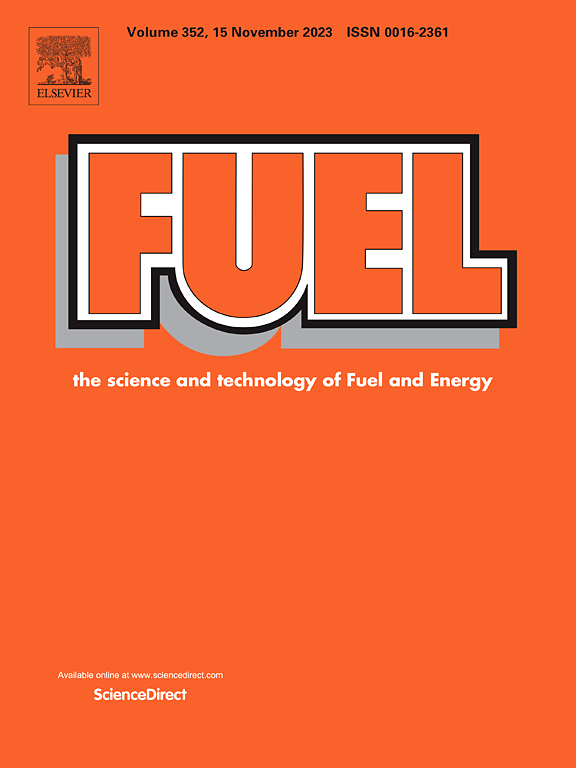Monitoring oil and gas field CH4 leaks by Sentinel-5P and Sentinel-2
IF 7.5
1区 工程技术
Q2 ENERGY & FUELS
引用次数: 0
Abstract
Methane (CH4) ranks as the second most abundant greenhouse gas globally, following carbon dioxide (CO2), constituting approximately one-sixth of total greenhouse gas emissions. While CH4 levels in the atmosphere are lower compared to CO2, the warming potential of CH4 greatly surpasses that of CO2. With a relatively short atmospheric lifespan of approximately 12 years, mitigating CH4 emissions presents a viable means to alleviate the impacts of climate change on human populations within a concise timeframe. The atmospheric sources of CH4 primarily stem from two categories: natural and anthropogenic. A small number of super-emitters frequently contribute significantly to the overall regional emissions. Monitoring and repairing leaks from super emitters of CH4 is a low-cost and effective way to slow down the greenhouse effect. Remote sensing satellites have gradually become an effective means of monitoring CH4 leakage due to their low cost and large coverage. There is a range of satellites that can be used to monitor CH4 concentrations and emissions, such as Sentinel-5P, GOSAT, GHGSat, Sentinel-2, GaoFen-5, Landsat, and so on. Because the pixel resolution is rough (about 7 km), Sentinel-5P (S5P) can only identify high-value CH4 anomalies in some areas, making it difficult to identify and monitor point source CH4 emission plumes. Sentinel-2(S2) can accurately detect CH4 leakage in band-11 and band-12 with high pixel resolution (about 20 m) but with every 5-day revisit time. In this paper, we monitored and quantified oil and gas field CH4 leakage using a combination of S5P and S2 data by taking advantage of the high temporal resolution (daily) of S5P and high spatial resolution (20 m) of S2. We used S5P data to find CH4 anomalies. Then we used S2 to zoom in on this location to find CH4 plumes. We used three different methods: Single-band–multi-pass (SBMP), Multi-band–single-pass (MBSP), and Multi-band-multi-pass (MBMP) to identify CH4 plumes. Using these methods, we successfully monitored three emission source cases (Algeria, Mexico, and Turkmenistan) and discussed them. Through the above three cases, we can conclude that the MBMP method has higher stability in identifying S2 CH4 plumes.
利用Sentinel-5P和Sentinel-2监测油气田CH4泄漏
甲烷(CH4)是仅次于二氧化碳(CO2)的全球第二大温室气体,约占温室气体排放总量的六分之一。虽然大气中CH4的含量比CO2低,但CH4的变暖潜势大大超过CO2。由于甲烷的大气寿命相对较短,约为12年,因此减少甲烷排放是在一个简明的时间框架内减轻气候变化对人口影响的可行方法。大气中甲烷的来源主要有两类:自然来源和人为来源。少数超级排放国经常对整个区域的排放作出重大贡献。监测和修复CH4超级排放者的泄漏是一种低成本和有效的减缓温室效应的方法。遥感卫星成本低、覆盖范围大,逐渐成为监测CH4泄漏的有效手段。有一系列卫星可用于监测CH4浓度和排放,如哨兵- 5p、GOSAT、GHGSat、哨兵-2、高分-5、陆地卫星等。由于像元分辨率较粗(约7 km), Sentinel-5P (S5P)只能识别部分区域的高值CH4异常,给点源CH4排放羽流的识别和监测带来困难。Sentinel-2(S2)能够以高像元分辨率(约20 m)准确探测到11波段和12波段的CH4泄漏,但每5 d重访一次。利用S5P的高时间分辨率(日)和S2的高空间分辨率(20 m),采用S5P和S2数据相结合的方法对油气田CH4泄漏进行监测和量化。我们使用sbp数据寻找CH4异常。然后我们用S2放大这个位置来寻找CH4羽流。我们采用单波段多通道(SBMP)、多波段单通道(MBSP)和多波段多通道(MBMP)三种不同的方法来识别CH4羽流。利用这些方法,我们成功地监测了三个排放源案例(阿尔及利亚、墨西哥和土库曼斯坦),并对它们进行了讨论。通过以上三种情况,我们可以得出MBMP方法在识别S2 CH4羽流方面具有较高的稳定性。
本文章由计算机程序翻译,如有差异,请以英文原文为准。
求助全文
约1分钟内获得全文
求助全文
来源期刊

Fuel
工程技术-工程:化工
CiteScore
12.80
自引率
20.30%
发文量
3506
审稿时长
64 days
期刊介绍:
The exploration of energy sources remains a critical matter of study. For the past nine decades, fuel has consistently held the forefront in primary research efforts within the field of energy science. This area of investigation encompasses a wide range of subjects, with a particular emphasis on emerging concerns like environmental factors and pollution.
 求助内容:
求助内容: 应助结果提醒方式:
应助结果提醒方式:


